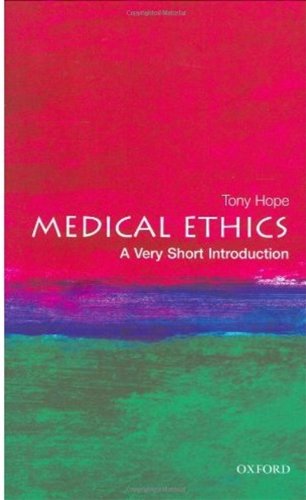موضوعات
آموزش و پرورش
ادبیات و زبان
پزشکی، دندانپزشکی و داروسازی
تاریخ و جغرافیا
داستان و رمان
دیگر
دین و فلسفه
روانشناسی
ریاضیات و آمار
سلامتی، تناسب اندام و رژیم غذایی
شیمی و پلیمر
علوم اجتماعی و حقوق
علوم زیستی و بیوتکنولوژی
فیزیک و نجوم
کامپیوتر و اینترنت
کتابهای کودکان و داستان
کسب و کار و اقتصاد
کشاورزی و دامپزشکی و غذا
معماری
مهندسی و فناوری
هنر و تئاتر
محصولات
Medical Ethics A Very Short Introduction Tony Hope - Original PDF
نویسندگان: خلاصه: The fox represents those who pursue many ends, often unrelated and even contradictory, connected, if at all, only in some de facto way, . . . [who] lead lives, perform acts, and entertain ideas that are cen- trifugal rather than centripetal . . . seizing upon the essence of a vast variety of experiences . . . without . . . seeking to fit them into . . . any one unchanging, all-embracing, . . . unitary inner vision. Berlin gives as examples of hedgehogs: Dante, Plato, Dostoevsky, Hegel, Proust, amongst others. He gives as examples of foxes: Shakespeare, Herodotus, Aristotle, Montaigne, and Joyce. Berlin goes on to argue that Tolstoy was a fox by nature but believed in being a hedgehog. 4 Medical Ethics 2. Are you a hedgehog or a fox? I am a fox, or at least would like to be. I admire the intellectual rigour of those who try to produce a unitary vision, but I prefer the rich, contradictory, and sometimes chaotic visions of Berlin’s foxes. I do not, in this book, attempt to approach the various problems I discuss from one single moral theory. Each chapter considers an issue on which I argue for a particular position, using whatever methods of argument seem to me to be the most relevant. I have covered different areas in different chapters: genetics, modern reproductive technologies, resource allocation, mental health, medical research, and so on; and have looked at one issue in each of these areas. At the end of the book I guide the reader to other issues and further reading. The one perspective that is common to all the chapters is the central importance of reasoning and reasonableness. I believe that medical ethics is essentially a rational subject: that is, it is all about giving reasons for the view that you take, and being prepared to change your views on the basis of reasons. That is why one chapter, in the middle of the book, is a reflection on various tools of rational argument. But although I believe in the central importance of reasons and evidence, even here the fox in me sounds a note of caution. Clear thinking, and high standards of rationality, are not enough. We need to develop our hearts as well as our minds. Consistency and moral enthusiasm can lead to bad acts and wrong decisions if pursued without the right sensitivities. The novelist, Zadie Smith, has written: There is no bigger crime, in the English comic novel, than thinking you are right. The lesson of the comic novel is that our moral enthusiasms make us inflexible, one-dimensional, flat. This is a lesson we need to take into any area of practical ethics, including medical ethics. What better place to start this tour of medical ethics than at the end, with the thorny issue of euthanasia? 6 Medical Ethics Chapter 2 Euthanasia: good medical practice, or murder? Good deeds do not require long statements; but when evil is done the whole art of oratory is employed as a screen for it. (Thucydides) The practice of euthanasia contradicts one of the oldest and most venerated of moral injunctions: ‘Thou shalt not kill’. The practice of euthanasia, under some circumstances, is morally required by the two most widely regarded principles that guide medical practice: respect for patient autonomy and promoting patient’s best interests. In the Netherlands and Belgium active euthanasia may be carried out within the law. Outline of the requirements in order for active euthanasia to be legal in the Netherlands 1. The patient must face a future of unbearable, interminable suffering. 2. The request to die must be voluntary and well-considered. 3. The doctor and patient must be convinced there is no other solution. 4. A second medical opinion must be obtained and life must be ended in a medically appropriate way.آیا کتاب مورد نظر هنوز بر روی سایت قرار نگرفته است؟ جای نگرانی نیست! کافی است بر روی گزینه سفارش کتاب کلیک کرده و درخواست خود را ثبت کنید. در کمتر از چند ساعت کتاب شما را آماده خواهیم کرد.
